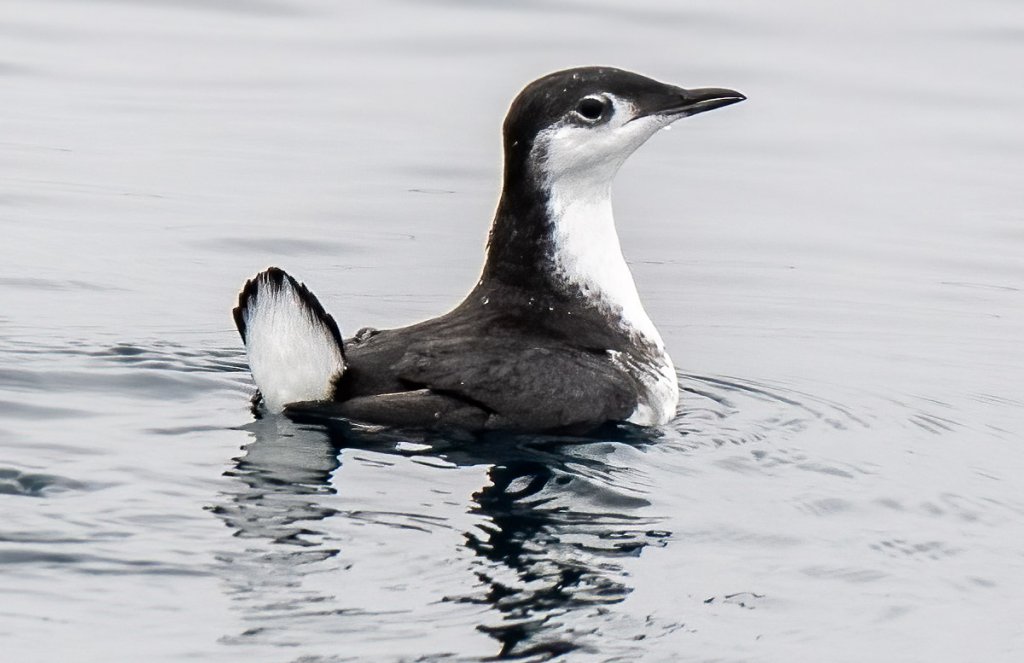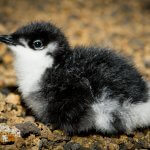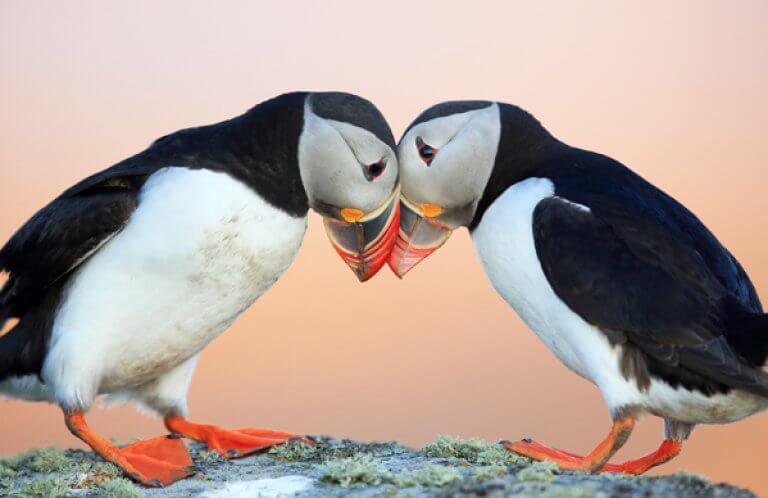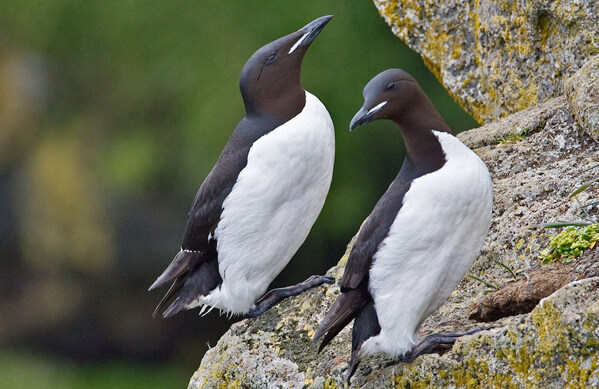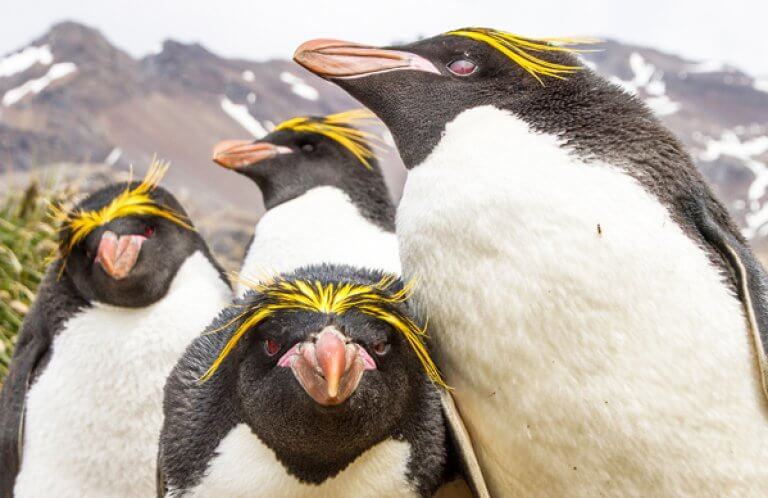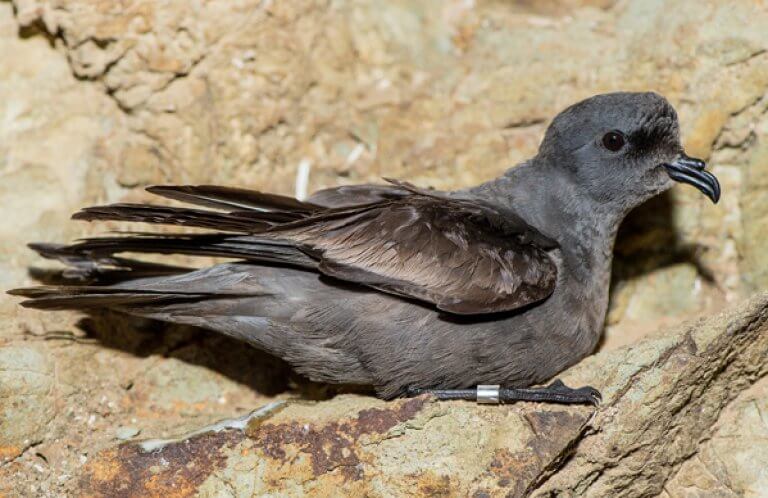About the Guadalupe Murrelet
The Guadalupe Murrelet is a small black-and-white seabird with a limited range, found only off the west coast of North America. Once lumped with the almost-identical Scripp's Murrelet to form a single species, known as the Xantus's Murrelet, the Guadalupe Murrelet was split off to form its own species in 2012 based on updated genetic information. This little auk, only the size of the American Robin (but more than twice as heavy) can be told from its close relatives by the larger amount of white on its face, which extends above and behind the eye.
This murrelet belongs to a larger family of black-and-white, ocean-going birds called the Alcidae, which are often compared to penguins – but with one essential difference.
Alcid Adaptations
Birds of the Alcidae family, including the Guadalupe Murrelet, Atlantic Puffin, and Thick-billed Murre, have much in common with members of the penguin family (Spheniscidae). Birds of both families have black-and-white plumage, are adept underwater swimmers, feed on fish, and have a pelagic lifestyle. But there is one important distinction between the two — all auks can fly, whereas penguins, including the Galapagos and Macaroni Penguins, are flightless.
Songs and Sounds
The Guadalupe Murrelet vocalizes in a short, rapid trill, most often heard at night around its nesting colonies.
Listen here: https://birdsoftheworld.org/bow/species/xanmur1/cur/multimedia?media=audio
© Robert L. DeLong, Macaulay Library ML138134
Breeding and Feeding
Chicks Ahoy!
The Guadalupe Murrelet comes ashore only to breed, forming small colonies that nest on the ground in the shelter of natural cavities such as rock crevices, abandoned burrows, or under shrubs. Pairs may remain together for multiple years.

The female murrelet lays two eggs on the ground, which she and her mate incubate for approximately 34 days. The murrelet chicks hatch covered in black and white down, looking like fuzzy versions of their parents. They are mobile soon after hatching and follow their parents out to sea after only two days. The chicks can't fly yet, so have to follow their parents on foot, clambering over rough terrain or jumping from high cliffs to reach the ocean. Once reunited, the family group swims out to sea, where the parents give the chicks their first meal. Young birds continue to depend on adults for several months until they become independent.
The Guadalupe Murrelet feeds on small fish and plankton, diving and swimming in pursuit of its prey. Like other alcids such as the Atlantic Puffin, it “flies” underwater, propelled by its short wings, which function as flippers, and strong webbed feet. It does not feed in large groups, but singly or in pairs.
Region and Range
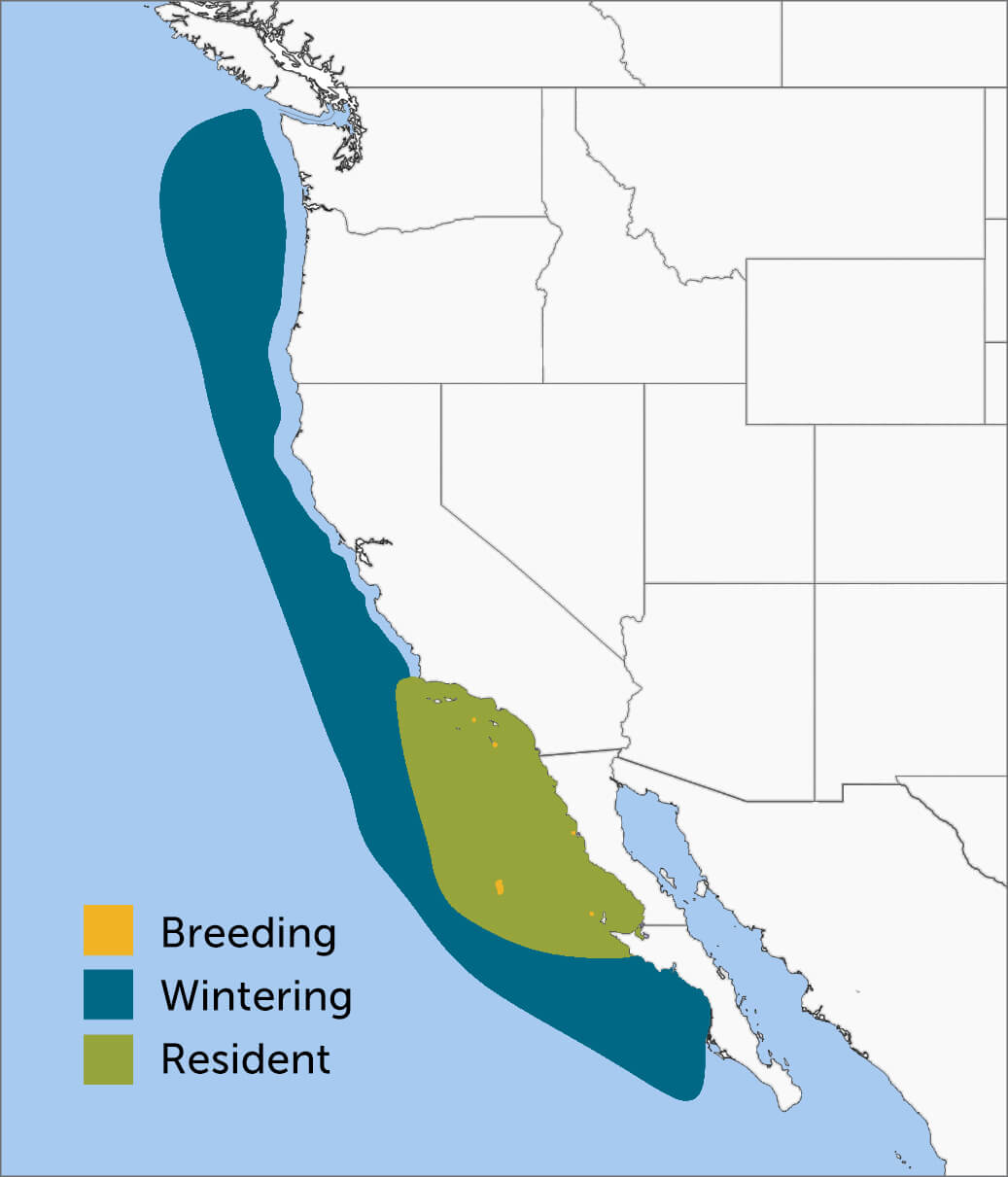
The Guadalupe Murrelet nests on the Guadalupe and San Benitos islands off the west coast of the Baja California Peninsula, Mexico. Single nests of the species have been found on Santa Barbara (2021) and San Clemente (2021) in the Channel Islands of southern California. After the breeding season, it heads out to sea singly and in pairs, dispersing northward as far as southern California. They return to their breeding islands each December to begin the nesting cycle anew.
Conservation
One of the biggest threats to the Guadalupe Murrelet once came from introduced species such as rats and feral cats, which killed adults and young, making once-suitable breeding islands uninhabitable for the birds. Introduced goats and rabbits also decimated vegetation on breeding islands, but have been removed
Much of the population of the Guadalupe Murrelet breeds near busy shipping lanes, so is threatened by oil spills; one big spill could decimate the already-small population. This species may also be impacted by fisheries, since its close relative, the Scripps's Murrelet, is known to have been sometimes caught and drowned in gill nets and the Guadalupe Murrelet is probably also vulnerable.
ABC and Mexican partner Grupo de Ecología y Conservación de Islas, A.C. (GECI) are leading a project to restore and protect Guadalupe Murrelet breeding sites on Guadalupe Island. A cat-proof fence was been installed on the south side of Guadalupe in 2014, and social attraction techniques, including acoustic playback systems, have been used to lure the birds to artificial burrows. These protection measures have been effective and Guadalupe Murrelet nest numbers are booming there.
This effort is part of GECI's long-term seabird restoration program, which has been conducted on Mexico's northwestern Pacific Islands since 2013. In addition to the Guadalupe Murrelet, this project will benefit the Critically Endangered Townsend's Shearwater, along with the Endangered Ashy Storm-Petrel and Townsend's Storm-Petrel.
Get Involved
Policies enacted by the U.S. Congress and federal agencies have a huge impact on seabirds. You can help shape these rules for the better by telling lawmakers to prioritize birds and bird-friendly measures. To get started, visit ABC's Action Center.
Plastics pose a deadly threat to seabirds around the world. You can help seabirds by reducing your daily use of plastics. To learn more and get started, visit our Plastics page.
American Bird Conservancy and partners are creating predator-free nest sites for vulnerable seabird species, reducing fishery impacts, and much more. This is a monumental undertaking, requiring the support of many, and you can help by making a gift today.





































